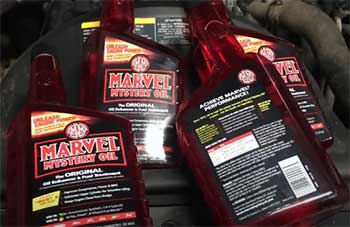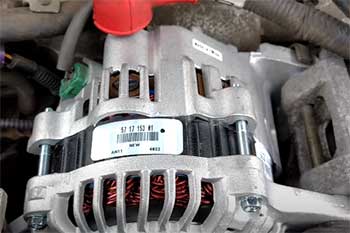You’re in the market for a CV axle, and I’m here to tell you: TrakMotive CV axles are worth every penny. As a car enthusiast who’s spent years tinkering under the hood, I’ve seen my fair share of drivetrain components, and TrakMotive stands out for its durability, affordability, and performance.
Whether you’re a daily commuter or an off-road junkie, these axles deliver. In this review, I’ll share my firsthand experience, break down the pros and cons, offer maintenance tips, and compare TrakMotive to other brands. Trust me, you’ll want to read on before making your next purchase.
My Experience With TrakMotive CV Axles

Let me set the scene: I drive a 2015 Honda CR-V, and last year, I noticed a telltale clicking noise when turning sharp corners—a sure sign my CV axle was on its last legs. The stock axle had served me well for over 100,000 miles, but it was time for a replacement.
After researching options, I decided to give TrakMotive a shot, specifically the CH-8256 model, which promised OEM-quality performance at a fraction of the cost. I ordered it from Amazon, and it arrived in a sturdy box with all the necessary hardware and grease included, which was a nice touch for a DIYer like me.
The installation was a breeze. I’m no professional mechanic, but I’ve swapped out a few axles in my day, and TrakMotive’s precise fit made the process painless. The axle slotted into place without any forcing or fiddling, and the included instructions were clear enough for a shade-tree mechanic like myself.
Within an hour, I had the new axle installed and was ready for a test drive. The first thing I noticed was how smooth my CR-V felt—no vibrations, no weird noises, just seamless power delivery from the transmission to the wheels. It was like driving a new car again.
I’ve put about 15,000 miles on the TrakMotive axle since then, including a few off-road adventures on rocky trails in Colorado. The axle has held up beautifully, even under the stress of uneven terrain and harsh winter conditions.
I was initially skeptical about its durability given the budget-friendly price, but it’s proven to be a workhorse. The neoprene boots are still intact, with no signs of cracking or leaking, and the joints feel as solid as the day I installed it. One standout moment was when I tackled a muddy incline during a camping trip—the axle didn’t flinch, delivering consistent power without any hiccups. For the price, I couldn’t be happier with its performance.
Pros of TrakMotive CV Axles
- Superior Quality Material
One of the notable things about TrakMotive CV axles is their usage of premium-grade neoprene boots. Neoprene is well-acknowledged for its superior durability, resilience to environmental wear and tear, and outstanding performance.
- High Precision Engineering
The high precision engineering that goes into every TrakMotive CV axle ensures perfect fitment. It reduces the chances of premature wear and enhances the overall life span of the axle.
- Versatile Application
TrakMotive offers a wide range of CV axles that are suitable for various makes and models of vehicles. This versatility makes them an ideal choice for vehicle owners and mechanics alike. You should watch this video if you already in love with it!
Also Read: Is APWI CV Axle Worth It?
Cons of TrakMotive CV Axles
- Mixed Longevity Reports
While my experience has been stellar, I’ve read some user reviews that raise concerns about long-term durability. A few folks on forums like Reddit and Subaru Outback Forums reported issues with TrakMotive axles failing after 20,000–30,000 miles, particularly on lifted vehicles or in extreme conditions. These cases seem to be the exception rather than the rule, but it’s worth noting. My axle has held up fine, but if you’re pushing your vehicle to its limits, you might want to monitor performance closely.
- Shipping and Packaging Woes
One frustration I encountered was with the packaging. While my axle arrived intact, the cardboard box was a bit beat-up, and I’ve seen complaints online about damaged shipments. Some users on Tundra Forums mentioned receiving dented or scratched axles due to flimsy packaging. TrakMotive could improve here by using sturdier boxes or adding more padding. If you’re ordering online, inspect your axle carefully upon arrival to avoid headaches.
- Slightly Higher Price Than Some Competitors
TrakMotive isn’t the cheapest aftermarket option out there. Brands like SurTrack and GSP often come in at a lower price point—sometimes $20–$30 less. While I think TrakMotive’s quality justifies the cost, budget shoppers might be tempted by these alternatives. That said, I’d argue you get what you pay for, and TrakMotive’s durability makes it worth the extra bucks in the long run.
TrakMotive CV Axles: Comparisons with Key Competitors
With many auto parts manufacturers on the market, choosing the right CV axle can feel overwhelming. Let’s compare TrakMotive with five of its closest competitors to help you make an informed decision.
- TrakMotive VS SurTrack
SurTrack offers a wide variety of axles at a lower price point than TrakMotive. However, reviews often mention a shorter lifespan for SurTrack’s products. While SurTrack can be a budget-friendly choice, TrakMotive’s emphasis on durability may provide better value in the long run.
- TrakMotive VS Cardone
Cardone is a renowned manufacturer known for its reengineering process. It ensures that their remanufactured CV axles match or exceed the performance of original equipment.
Despite this, some users report receiving Cardone axles missing components, leading to installation difficulties. In contrast, TrakMotive’s commitment to ensuring fit and completeness right out of the box sets it apart.
- TrakMotive VS GSP
GSP North America provides CV axles that are competitively priced and designed to fit a wide range of vehicles. However, some users have noted issues with the longevity of GSP axles.
TrakMotive, with its superior build quality, often outlasts GSP axles under similar conditions.
- TrakMotive VS DTA
Drive Tech America (DTA) offers axles made with high-quality steel and heat-treated components. While DTA axles are robust and reliable, the scope of their product line is limited compared to TrakMotive, especially for less common vehicle models.
- TrakMotive VS TRQ
TRQ aims to offer reliable and high-quality parts. Their axles are generally well-regarded, although some users report noise issues after prolonged use.
TrakMotive, known for its quiet operation and use of premium neoprene in their boot construction, often fares better in terms of noise reduction.
Each of these competitors has their strengths and weaknesses. TrakMotive, while often priced higher than its competitors, justifies this with the use of superior materials and a commitment to precision engineering.
The final choice will always depend on your specific needs and preferences.
Also Read: Is FVP CV Axle Worth It?
Maintenance Tips For TrakMotive CV Axles
- Regular Boot Inspections
Your CV axle’s boots are its first line of defense, so check them every few months. I make it a habit to peek under my CR-V during oil changes, looking for cracks, tears, or grease leaks in the neoprene boots.
A small tear can let dirt and water in, wrecking the joint. If you spot damage early, you can replace the boot for a fraction of the cost of a new axle. Use a flashlight and get up close—those tiny splits can be hard to see.
- Keep Joints Greased
TrakMotive axles come with greaseable joints, which is a game-changer for longevity. I grab a grease gun every 10,000 miles or so and give the joints a quick pump with high-quality CV joint grease. It’s a simple task that takes 10 minutes but can add years to your axle’s life.
Make sure you use the right grease—TrakMotive recommends molybdenum-disulfide-based grease for optimal performance. Don’t overdo it, though; too much grease can stress the boots.
- Avoid Extreme Angles
If you’ve got a lifted vehicle or love off-roading, be mindful of your axle’s articulation angles. TrakMotive’s Xtended Travel axles are designed for up to 47 degrees of articulation, but pushing beyond that can strain the joints.
I learned this the hard way when I bottomed out on a rocky trail and heard a faint pop (luckily, no damage). Ease off on extreme angles when possible, and consider a diff drop kit for lifted rigs to reduce stress.
- Clean Off Debris
After off-road trips, I always hose down my undercarriage to clear mud, dirt, and salt from the axles. Debris can stick to the boots and cause premature wear, especially in harsh climates.
A quick rinse with a garden hose does the trick—just avoid high-pressure washers that could damage the boots. If you live in a snowy area, pay extra attention during winter to keep road salt at bay.
- Listen for Warning Signs
Your car will tell you when something’s wrong if you listen. Clicking noises during turns, vibrations at speed, or a shaky steering wheel are red flags.
I caught my old axle’s failure early because I noticed a faint click when pulling into my driveway. If you hear or feel anything odd, inspect the axle ASAP. Early intervention can save you from a costly breakdown.
Also Read: Comparison of Cardone And SurTrack Axles.
Frequently Asked Questions (FAQ)
SurTrack Auto Parts is the manufacturer of SurTrack CV axles. They’re known for producing a wide range of automotive parts, including axles for various makes and models of vehicles.
Cardone Industries, the company that manufactures Cardone CV axles, is based in Philadelphia, Pennsylvania. They pride themselves on their “reengineering process” to ensure quality and durability in all their products.
Axles made from 300M steel are considered among the strongest. This type of steel is known for its exceptional strength and toughness, making it a perfect choice for high-performance applications.
TRQ, short for Trusted Reliable Quality, offers a range of automotive parts, including axles. Users generally find TRQ axles to be reliable and of good quality, although individual experiences can vary based on the specific make and model of the vehicle.
Wrapping It Up
TrakMotive CV axles stand out in the crowd for their high-quality materials, precision engineering, and versatile applications. However, the limited availability and higher price point can be considerations for some.
As with all auto parts, it’s essential to consider your specific needs, budget, and vehicle type before making a decision.

